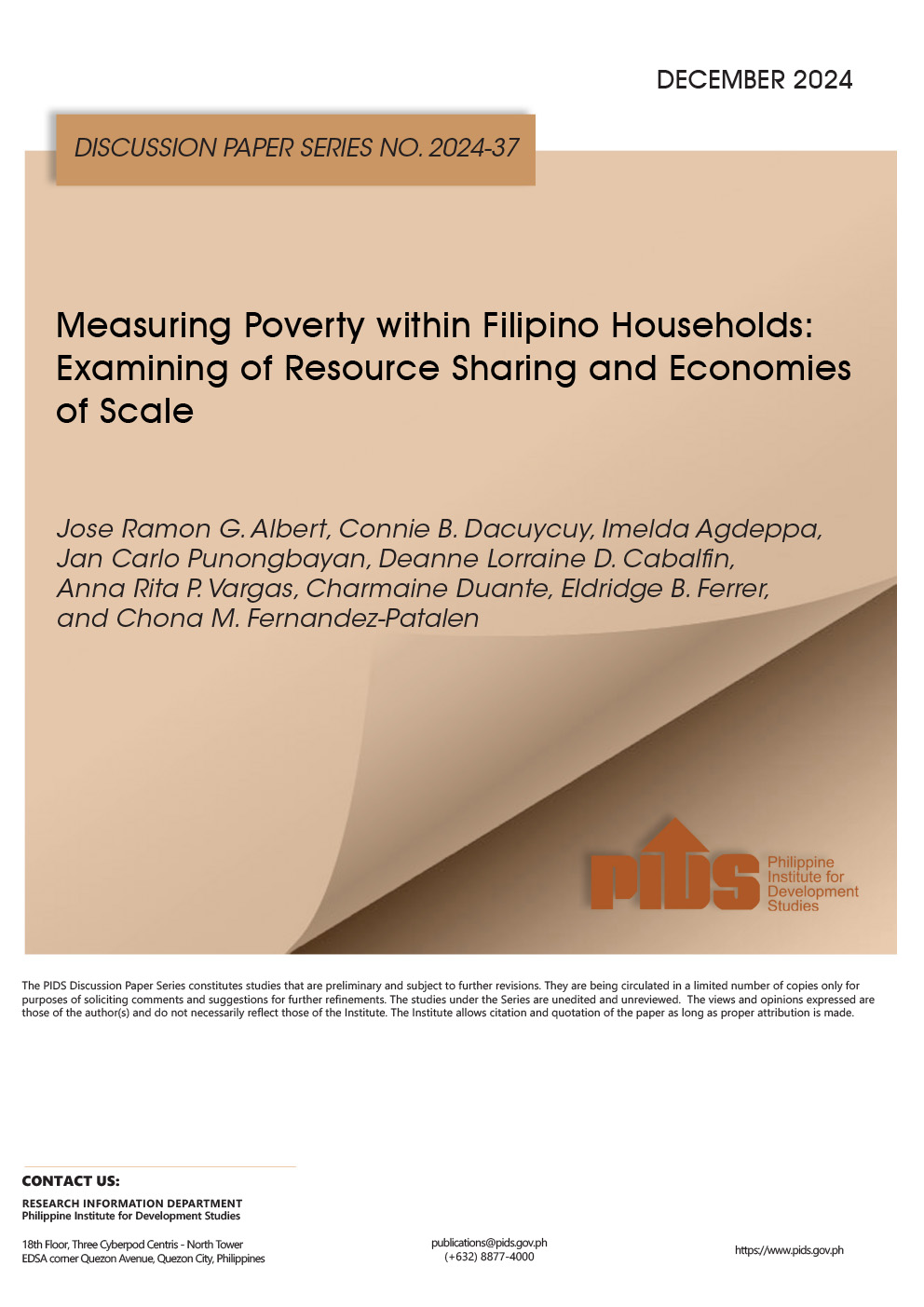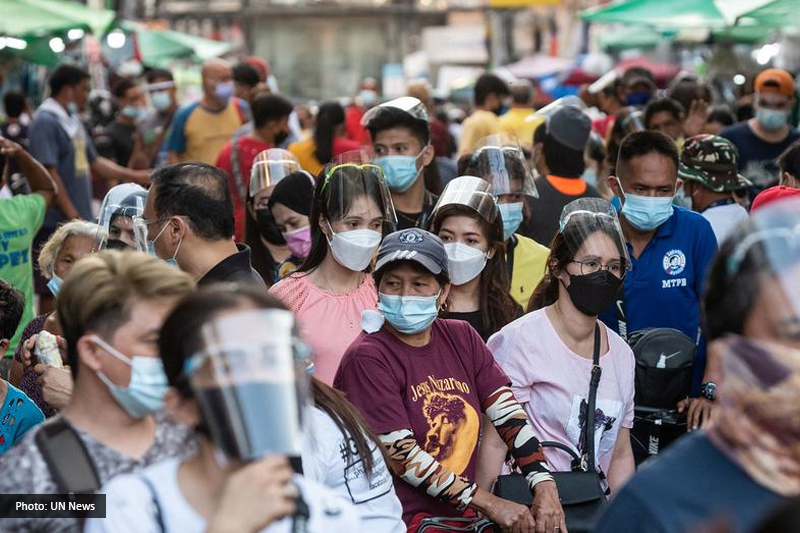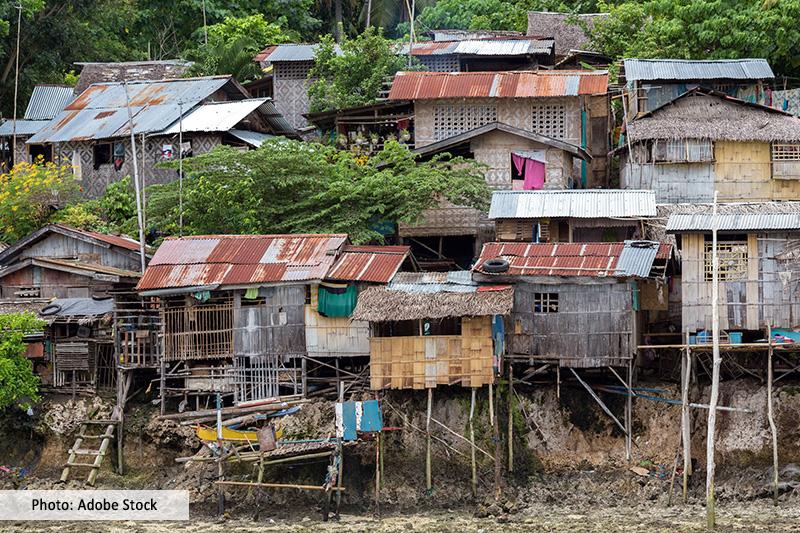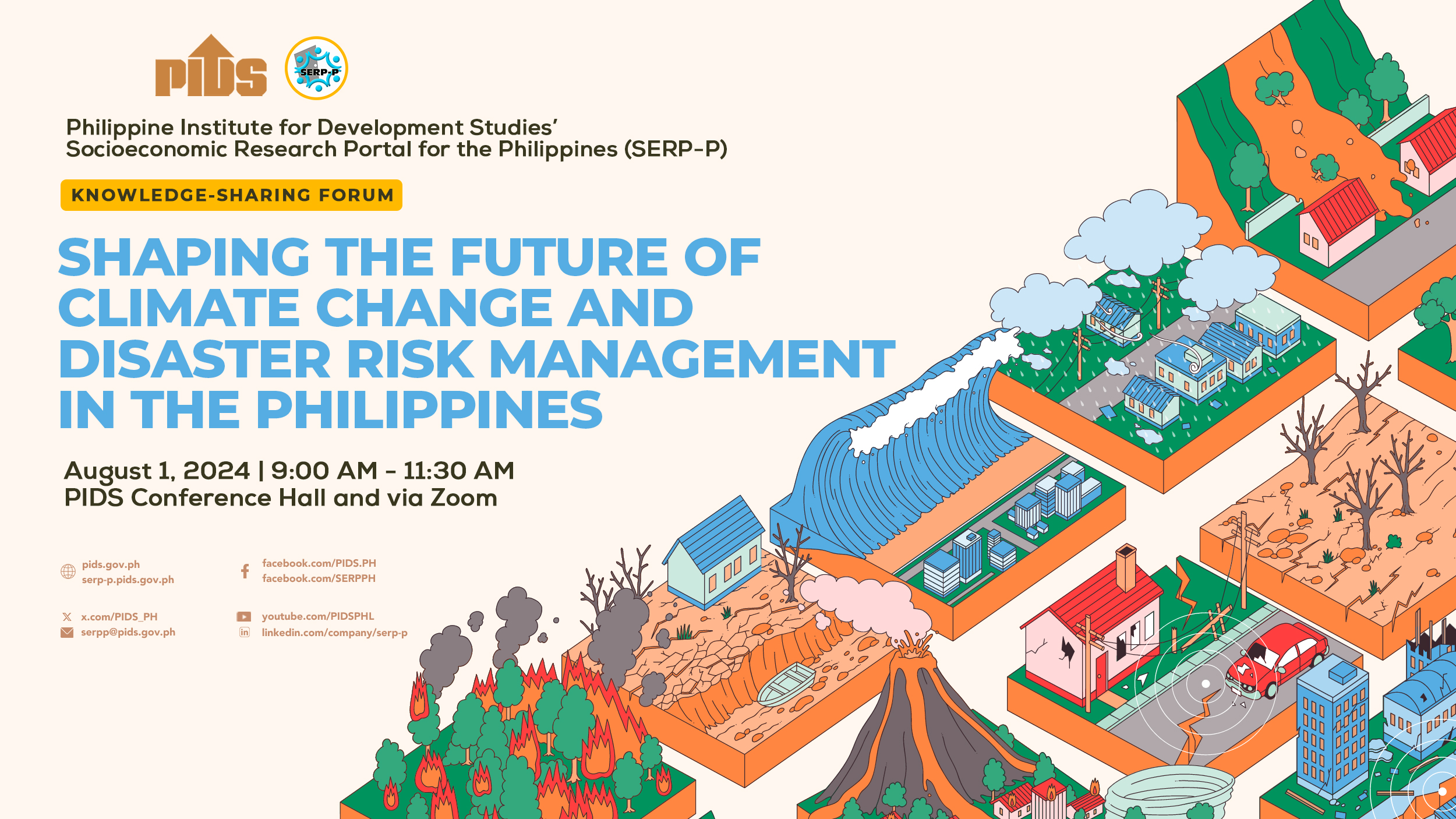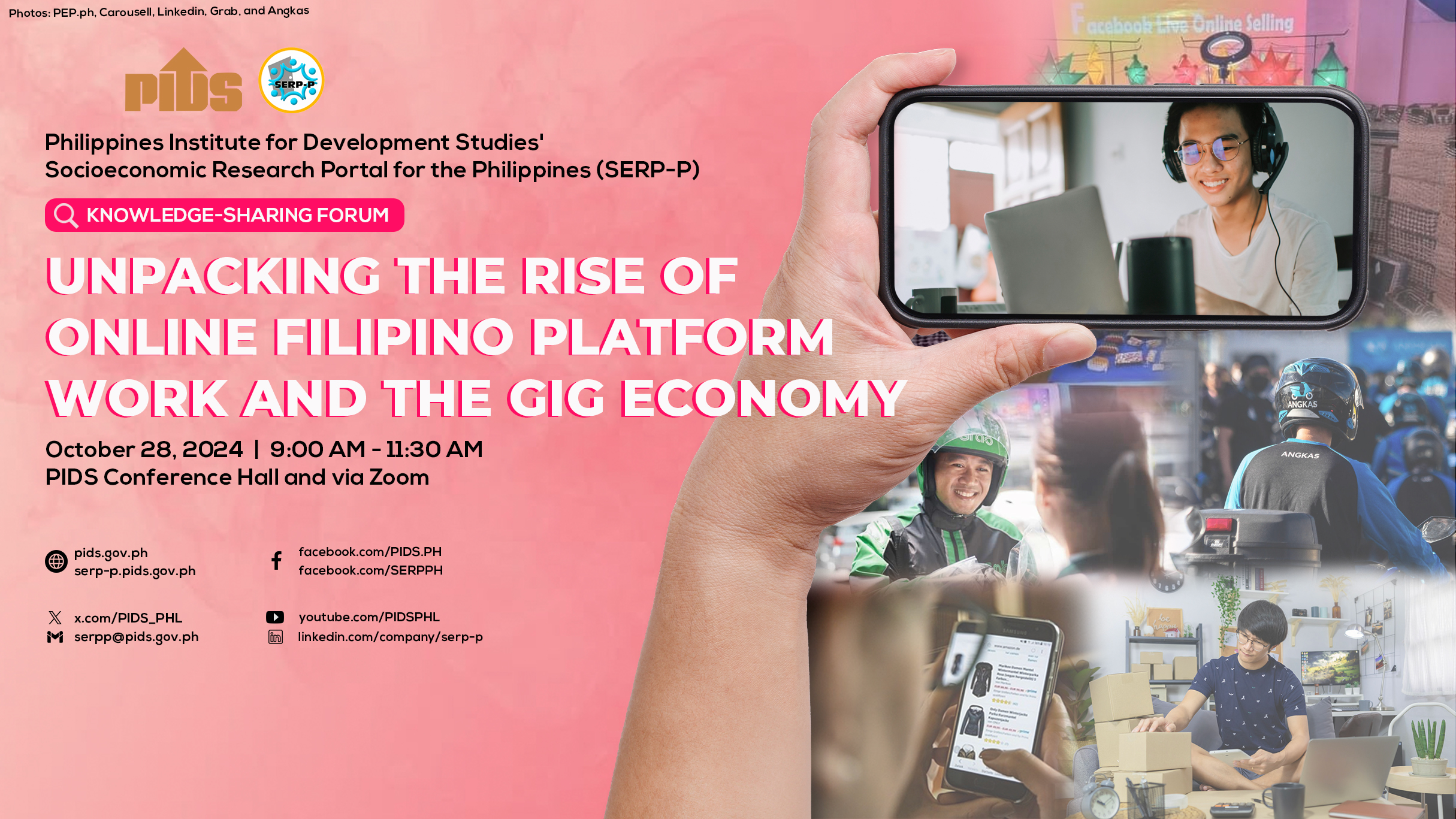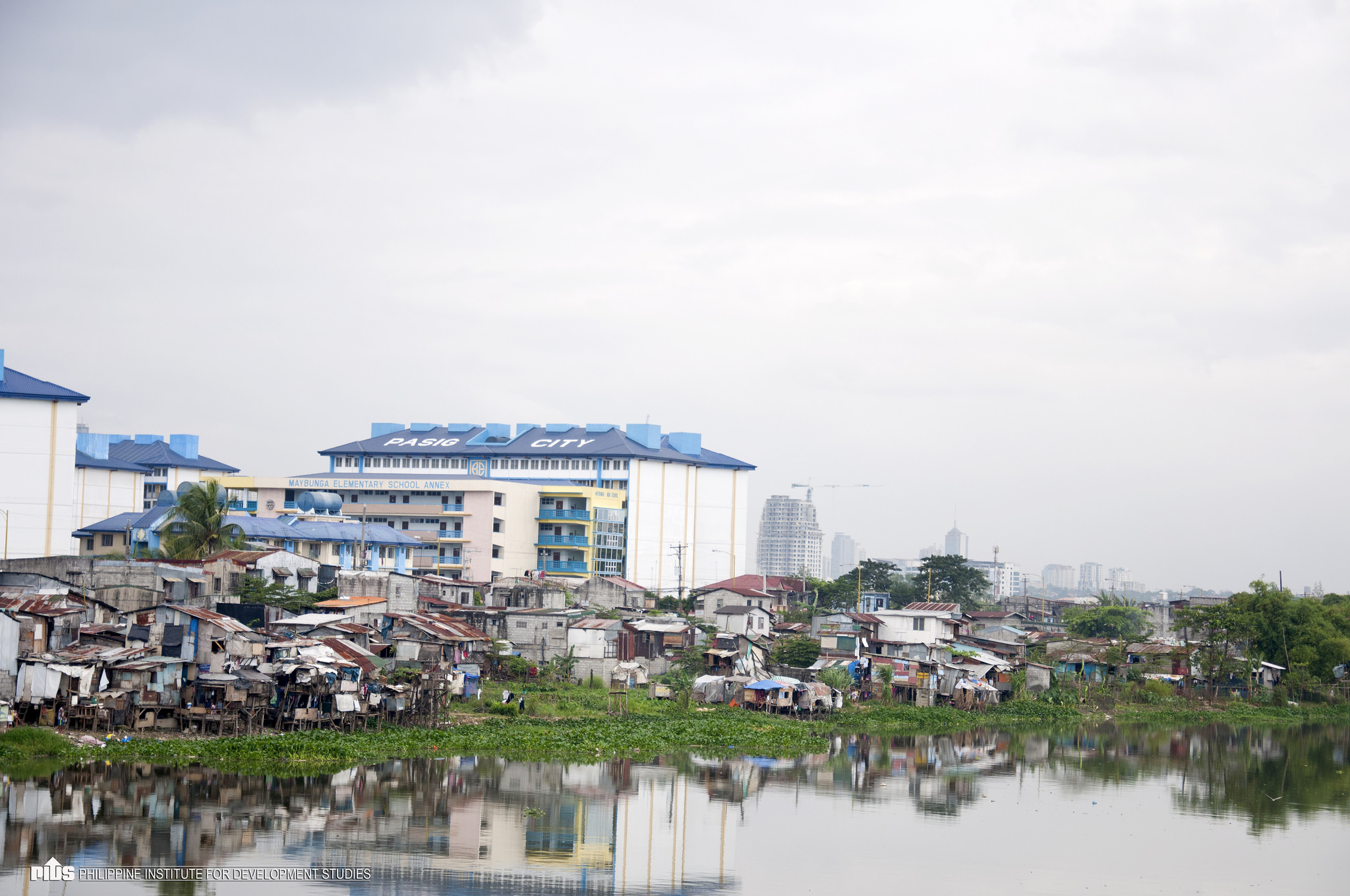
Shocks, such as natural disasters, inflation, income loss, conflicts, and wars, are just some of the factors that can drive more families into poverty or keep them in that situation. According to estimates of state think tank Philippine Institute for Development Studies (PIDS), close to half of Filipino families are at risk of remaining or becoming poor if government fails to put the needed interventions to protect them.
According to a PIDS study authored by Jose Ramon Albert and Jana Flor Vizmanos, PIDS senior research fellow and research analyst, respectively, about 48.5 percent of Filipino households are vulnerable to income poverty, a third of which are highly vulnerable. This figure, they said, is around double to triple the corresponding official poverty estimates. In 2015, it was estimated that only about 17 percent of families were living below the poverty line.
Based on the poverty threshold set by the Philippine Statistics Authority, a family of five in 2015 needed an average of PHP 6,329 per month to meet their basic food needs, and PHP 9,064 per month for their minimum basic food and nonfood needs.
The study highlighted the importance of studying vulnerability to poverty or the probability of being poor in the future. According to the authors, this can help government design differentiated actions and programs for highly vulnerable and relatively vulnerable households.
“Poverty is dynamic. With the poor exiting and the nonpoor sliding into poverty, government should broaden the scope of its assessments by taking into account both poverty and vulnerability estimates,” they argued.
Albert and Vizmanos highlighted the importance of managing risks systematically, particularly in terms of building risk resilience through social protection, to address Filipinos’ vulnerability to income poverty.
To illustrate, the authors likened the elimination of poverty to treating the sick, which can either be curative (i.e., alleviating the conditions of the poor, and/or helping them exit out of poverty) or preventive (i.e., protecting those vulnerable from the risks and harmful effects of poverty by building the resilience of the vulnerable).
The last decade has seen significant strides in social protection in the Philippines. However, the authors lamented that most social protection programs involved the provision of a uniform social assistance to all beneficiaries, rather than accounting for differentiated needs. The government’s SocPen (Social Pension) Program, for example, provides PHP 500 monthly pensions for all beneficiaries, who are by law, supposed to be indigent senior citizens.
“Social protection can achieve more of its intended impact if policies and programs were integrated, synergized, and collaborative. Collaboration enables social protection actors to address complex challenges, use knowledge and expertise more effectively with shared understanding and a common purpose, and integrate support to become more efficient and effective,” they emphasized.
They added that when done in synergy, social protection interventions can attain outcomes that cannot be achieved by working in isolation.
Who are more vulnerable to poverty?
According to this PIDS study, the rural population is more vulnerable than its urban counterpart, with vulnerability rates at two thirds of all households in rural areas, compared to two-fifths of urban households, as of 2015. Across the regions, the Autonomous Region in Muslim Mindanao is the most vulnerable region, with 8 in every 10 households being vulnerable to poverty.
Meanwhile, the authors also noted that families with more young members are more vulnerable to poverty regardless if they are from the urban or rural areas.
On the other hand, higher educational attainment lessens a household’s vulnerability to income poverty. The vulnerability rate of households drops with increasing educational attainment of the household head.
“More than half of households with heads who had no education are highly vulnerable, and another quarter are relatively vulnerable. Meanwhile, about two-thirds of households with heads that have had some elementary education (including those who finished at most elementary) are vulnerable, while less than half of those with heads who have had some high school education (including those who finished at most high school) are vulnerable,” they explained.
In contrast, only a quarter of households with heads who at least attended college are vulnerable to poverty. This suggests the importance of human capital investments, not only by government but also by the households themselves.
In 2015, vulnerability rates of over 25 percent were observed among households whose heads have major income sources from fishery, forestry, mining, income from family sustenance activities, wage/salaries from agricultural activities, crop farming, and gardening.
The target for the country, as reflected in the Philippine Development Plan (PDP) 2017-2022, is to reduce overall poverty rate from 21.6 percent to 14 percent, and poverty incidence in the rural areas from 30 percent in 2015 to 20 percent in 2022. The PDP 2017-2022 is anchored on the AmBisyon Natin 2040, a national long-term vision that ‘’represents the collective vision and aspirations of Filipinos for themselves and for the country”. ###
This press release was based on the PIDS discussion paper titled “Vulnerability to Poverty in the Philippines: An Examination of Trends from 2003 to 2015”.
According to a PIDS study authored by Jose Ramon Albert and Jana Flor Vizmanos, PIDS senior research fellow and research analyst, respectively, about 48.5 percent of Filipino households are vulnerable to income poverty, a third of which are highly vulnerable. This figure, they said, is around double to triple the corresponding official poverty estimates. In 2015, it was estimated that only about 17 percent of families were living below the poverty line.
Based on the poverty threshold set by the Philippine Statistics Authority, a family of five in 2015 needed an average of PHP 6,329 per month to meet their basic food needs, and PHP 9,064 per month for their minimum basic food and nonfood needs.
The study highlighted the importance of studying vulnerability to poverty or the probability of being poor in the future. According to the authors, this can help government design differentiated actions and programs for highly vulnerable and relatively vulnerable households.
“Poverty is dynamic. With the poor exiting and the nonpoor sliding into poverty, government should broaden the scope of its assessments by taking into account both poverty and vulnerability estimates,” they argued.
Albert and Vizmanos highlighted the importance of managing risks systematically, particularly in terms of building risk resilience through social protection, to address Filipinos’ vulnerability to income poverty.
To illustrate, the authors likened the elimination of poverty to treating the sick, which can either be curative (i.e., alleviating the conditions of the poor, and/or helping them exit out of poverty) or preventive (i.e., protecting those vulnerable from the risks and harmful effects of poverty by building the resilience of the vulnerable).
The last decade has seen significant strides in social protection in the Philippines. However, the authors lamented that most social protection programs involved the provision of a uniform social assistance to all beneficiaries, rather than accounting for differentiated needs. The government’s SocPen (Social Pension) Program, for example, provides PHP 500 monthly pensions for all beneficiaries, who are by law, supposed to be indigent senior citizens.
“Social protection can achieve more of its intended impact if policies and programs were integrated, synergized, and collaborative. Collaboration enables social protection actors to address complex challenges, use knowledge and expertise more effectively with shared understanding and a common purpose, and integrate support to become more efficient and effective,” they emphasized.
They added that when done in synergy, social protection interventions can attain outcomes that cannot be achieved by working in isolation.
Who are more vulnerable to poverty?
According to this PIDS study, the rural population is more vulnerable than its urban counterpart, with vulnerability rates at two thirds of all households in rural areas, compared to two-fifths of urban households, as of 2015. Across the regions, the Autonomous Region in Muslim Mindanao is the most vulnerable region, with 8 in every 10 households being vulnerable to poverty.
Meanwhile, the authors also noted that families with more young members are more vulnerable to poverty regardless if they are from the urban or rural areas.
On the other hand, higher educational attainment lessens a household’s vulnerability to income poverty. The vulnerability rate of households drops with increasing educational attainment of the household head.
“More than half of households with heads who had no education are highly vulnerable, and another quarter are relatively vulnerable. Meanwhile, about two-thirds of households with heads that have had some elementary education (including those who finished at most elementary) are vulnerable, while less than half of those with heads who have had some high school education (including those who finished at most high school) are vulnerable,” they explained.
In contrast, only a quarter of households with heads who at least attended college are vulnerable to poverty. This suggests the importance of human capital investments, not only by government but also by the households themselves.
In 2015, vulnerability rates of over 25 percent were observed among households whose heads have major income sources from fishery, forestry, mining, income from family sustenance activities, wage/salaries from agricultural activities, crop farming, and gardening.
The target for the country, as reflected in the Philippine Development Plan (PDP) 2017-2022, is to reduce overall poverty rate from 21.6 percent to 14 percent, and poverty incidence in the rural areas from 30 percent in 2015 to 20 percent in 2022. The PDP 2017-2022 is anchored on the AmBisyon Natin 2040, a national long-term vision that ‘’represents the collective vision and aspirations of Filipinos for themselves and for the country”. ###
This press release was based on the PIDS discussion paper titled “Vulnerability to Poverty in the Philippines: An Examination of Trends from 2003 to 2015”.

